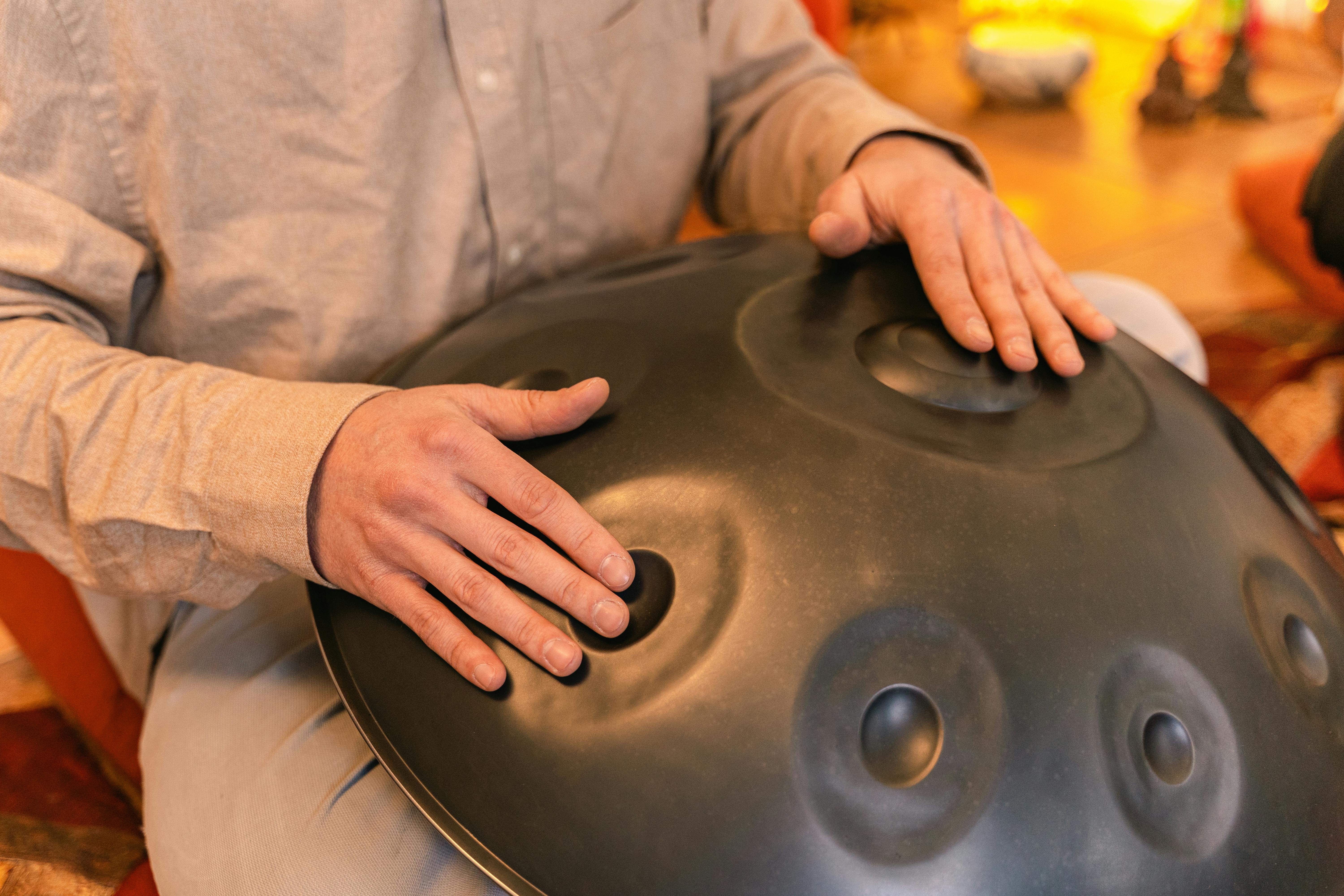 Written by Dr. Brandon Haskett, Associate Professor of Music, Saginaw Valley State University
Written by Dr. Brandon Haskett, Associate Professor of Music, Saginaw Valley State University
There are several considerations to address before starting a community steel band. These include the purpose of the group, instrument purchasing, participants’ level and teaching strategies, rehearsal space and access, the financial model, and public relations.
Is the group intended to be a gigging ensemble or is it attached to a school program where the group plays just a handful of times a year? Will the group be expected to play stereotypical repertoire to please resort-type audiences, or will the repertoire look more like concert rep for the steel band?
In Phoenix, Ariz., Jerry Lopatin has run a community steel band for many years, and that group gigs frequently because the members of the group ultimately pushed for more performances on their schedule.
Conversely, the members may look at the group as a musical outlet for recreation and may not be willing or able to dedicate more than one or two nights a week to the ensemble. Have an honest conversation with the members about what they want out of the group, and the director should also determine the amount of time he or she can spend.
Purchasing Instruments/Equipment
Choosing instruments is one of the most difficult challenges a director can face. Consider the following before purchasing:
- Buying steelpans should not constitute a one-off transaction; far better service occurs when there is an ongoing relationship with the seller
- Listen to the builders’ work with both chromed and painted versions
- Ask for recommendations from the builder and from other directors
- Consider whether that builder regularly sends tuners into the area. Have the tuners from the company that built the instruments work on them
- Consider the layouts and ranges that the builder typical builds.
- Ask questions about such elements as bored pans, solid hoop, metal thickness, oversized pans, and note the panel shape.
- Ask what the turn-around time is on an order
- Ask for the individual’s name who will be making the band’s instruments.
- Ask about personnel trained by the builder including length of training.
The instruments will need to last an extended period of time, and the highest quality instruments for the investment is desirable.
With respect to stands, try them out if at all possible. There are many different options available, and there is no longer a great reason to use old-style pipe stands. Collapsible stands with individually adjustable leg heights are ideal for outdoor situations; however for exclusively indoor play, wheels may be best without need for individual leg height adjustments. It is important to think through practice and performance space issues before purchasing stands. Additionally, some stands come with hooks, while others come with hollow posts to attach the steelpan.
Care and Storage of Instruments
Care and storage of instruments is important to preserving the instruments. Here are several suggestions for keeping the instruments in good working order:
- Have the steelpans tuned yearly
- Check hanging loops for integrity regularly
- Clean fingerprints with Windex and a microfiber cloth
- Use a black permanent marker to cover chips in black paint
- Use silver fingernail polish to cover chips in silver paint
- Put covers on all steelpans when not in use to keep out dust and prevent unauthorized people from playing the instruments
- Store instruments in rolling hard cases, particularly if space is shared or if traveling is planned with the instruments
Level of the Participants/Teaching Strategies
Will all members be expected to read sheet music? Will teaching be done exclusively by rote? Flexibility in this area will allow for more people to participate in the group. One of the joys of steel band is that many technical obstacles that limit early success aren’t an issue as they would be with an orchestra.
Notation can be an obstacle in the beginning. The teaching approach can be adjusted from singing/playing a part for one member to correct someone’s interpretation of the notation to playing a rhythm on drum set to correct a rhythmic error. There is challenge and creativity required to help each community member be successful.
The successful teaching of notation requires patience and different instructional approaches. Introducing a difficult part slowly and with patience can help ease players into a piece with less frustration. Breaking concepts down into small segments and then putting them back in context is helpful. Members learn by being given a few minutes to practice a challenging section. Rhythm issues are corrected from the drum set, and parts are layered in to help establish rhythmic independence.
Video/audio examples can be provided to community band members so they have an example to aim for and so they can follow along with their parts. Listening is crucial for musical development and is quite important in teaching improvisation.
Rehearsal Space and Access
How big is the rehearsal space? How many band members are ultimately desired? Will instruments be left set up or will they be cased when not in rehearsal? Will rehearsal set-ups be changed from time to time?
A balance is needed between highs, mids, and lows; however, there is much debate about what makes for a balanced band. For a ten-piece band, the recommended mix is for three tenors, one double tenor, two double seconds, two triples (one guitar and one cello), a tenor bass, and a six-bass. A second six-bass is not recommended, to preserve space. Also preferred is the projection of the tenor bass for an outdoor gig. Some people substitute a double tenor for a double second because of its different voice.
Can band members practice before rehearsals or stay afterward, since it is unlikely that separate steelpans are available for practice at home, There are apps available that allow players to practice on their iPad; however, not all note layouts are available. The best approach involves creating cardboard templates of the instruments for practice. Some members prefer receiving additional instruction before or after rehearsals, and some prefer practicing at home. Recording practice sessions is also useful.
The Financial Model
There will be one-time costs for steelpans, stands, and cases. These items can be funded by donors, grants, or fundraisers. Recurring costs for tuning, mallet replacement, sheet music, the director’s stipend, travel, and a reserve must be offset by external sources and from band member fees and money from gigging. Gigging income should be used mainly to offset travel costs. A reserve should be established to cover one year of expenses.
Finances can be managed through a school or university by establishing a non-profit organization, or by independent means. Proper research of legal and tax ramifications should be done.
The finances of the group should be as transparent as possible. Members should pay by the session to provide for a regular and stable income. Band members should understand how the group receives and uses the money received.
Public Relations/Recruitment
Word of mouth is a powerful recruitment tool for new members and for potential gigs, as is building a website with audio examples of the group’s work. Posting high quality pictures, a rehearsal schedule, instruction on becoming a member, and scheduled performances is a good plan. This effort will help establish an audience and increase band membership.
The best public relations involve professionalism, excellent performances, and effective band promotion.
When recruiting new members, consider using social media and flyers. Brief performance clips online of excellent performances are the best recruitment tool.
Remember, to fully achieve your goal of learning how best to establish your band, make sure to put in the effort to learn as much about it as possible on your own. Tasks you should focus on include asking questions of other directors, listening to other groups, video-record teaching, improve your own performance as a director, arrange the music for the band, listen to feedback from band members and adjust accordingly. Best wishes on starting your own community steel band!
Dr. Brandon Haskett is an Assistant Professor of Music Education at Saginaw Valley State University. His main research interests include the intersections of ethnomusicology and music education, curriculum and pedagogy of world music ensembles in schools and universities, and the history of steelpan programs in the schools. Haskett remains an active percussionist, presenting a shared recital in March 2014 and regularly playing drumset and steelpan in steel band settings. Additionally, he directs the SVSU Percussion Ensemble, the Valley Steel student steel band, and the Valley Steel community steel band.







